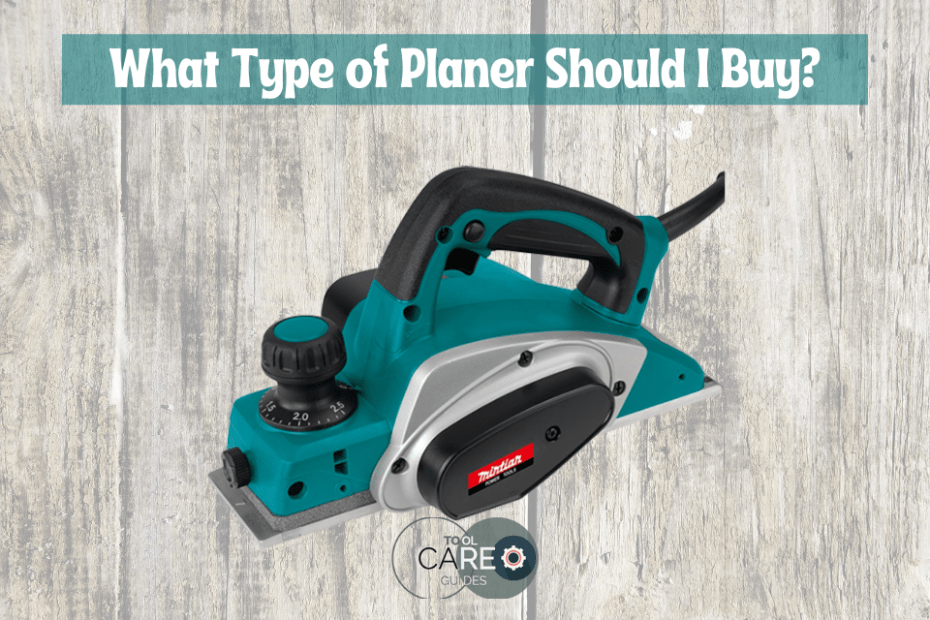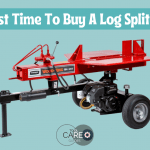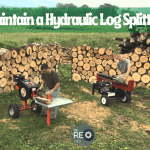Quick Overview of This Article
The three types of planers are manual, electric, and stationary planers.
Choosing the right planer can be troublesome because of the many brands and models available in the industry. The tools differ in size, operations, and also in cost.
But with a handy guide, it doesn’t have to be complicated to pick the right tool. Even a novice in woodwork will find this umbrella guide useful in finding a dream tool to upgrade his collection.
Before we nosedive into the right planer for you;
What does a planer do?
A planer’s work is simple; to smoothen rough woodwork and customize the thickness to your liking. The tool can even flatten warped timbers.
Whether electric, stationery, or manual, you will find over 40 models, but they all fall under the above three categories. But do the categories make sense, or is a planer just a planer?
Type of Planer: Why They Make Sense
The different types of wood planers function uniquely. As mentioned above, if you are just beginning woodwork and carpentry, you will eventually realize a need for a specific planer. A left-out bark and a rough spot are not easy to remove with sandpaper, and a rough piece of furniture is not appealing either.
When you feed a thick nasty wood in a plane, the result is a smooth and thin board ready for a joinery affair. Planers turn rough lumber into ready-to-use boards by giving them standard thicknesses.
If you apply a thickness planer, that thick piece of wood or pallet lying at the timber yard can become a worthy timber for your small and medium DIY projects.
What if you need a tool for deburring and polishing woodworking surfaces? You will need a sturdy machine that guarantees you finer details and a smoother finish. While a Flat-Plane Bottom-Edged planner will handle that conveniently, a scrub planer will give you a raw deal!
And that’s why the type of planer makes sense.
Type of wood planers
This review will comprehensively discuss the three types of planers; electric, stationery, and manual planers.
Electric planers
Like the name, electric planers use electricity to function. For this reason, they work at full tilt. The greatest snag is that you can make irreversible mistakes, so you have to be precise. Other than that, the planers are flexible and function excellently.
Here are the main models of electric planers:
1. Bench-top planer
This tool is precise for giving you an even board thickness. It comes in a box shape, cuts, and peels boards to your desired consistency. The bench-top planer is unique as it works on both surfaces of timber.
Additionally, a bench-top planer has high-speed blades (2 or 3) for trimming tiny layers from wood. That means the planer is precise for small pieces of wood like knife handles.
You can fine-tune a bench-top planer to work to your specifications. Even the difficult-to-achieve level tabletops are possible to make with this tool.
Bench-top’s consistent shaving reveals your workpiece’s aesthetic and grain alignment, even in old wood. In addition, this planer is effortless to use because it uses electric power to ride on boards.
2. An electric hand planer
This electric planer is an ideal tool for removing small quantities of wood. You can use the tool to trim rough edges and surfaces. Like the bench-top planer, this tool comes with two or three blades. The planer comes with 1/8 – 3/32 inches cut per pass to cut a material precisely.
The electric hand planer works similarly to a manual hand model. But the electric hand planer works quite fast because of the electric rotating blade; at 10,000-20,000rpm.
This model has two metal plates or the shoe, which safeguard and hold the rotating blades in between. Most woodworkers prefer this device to the manual hand planer because of its speed and precision.
Manual planers
Manual planers are also known as hand planers. If you pick this type of planer, you will use your effort to operate the tool. But the manual planers have a reputation for precision. It is rare to go wrong with the tool.
In addition, you will find several models in the stores, and you will base your decision on your needs. You can even choose to have several planer collections for your workshop.
Manual planers are many and serve different purposes. Have a glance at some of the hand or manually driven tools for your consideration;
1. Basic Hand Planer
You will find every woodworker with a basic hand planer. The tool’s name is suggestive; it is basic and requires physical strength to push and shape a workpiece.
A basic hand planer requires you to use both hands. And as you push the planner, the cutting blade runs over the wood surface and peels off the uneven portions along or across the grains.
But this is basic but not a weak tool. Its body is firm and has a sharpened metal plate that uniformly trims when you push the device over a wood surface.
With the above design, you have the ideal planer for riding on the wood’s face and cutting high spots at constant angles. The result is a smooth surface. A basic hand planer is a must-have if embarking on a woodwork journey.
2. Surform Planer
A surform planer stands out among the manual planers. The tool has perforated sheet metal that resembles a food grater. Its cutting edge consists of a perforated steel strip mounted on a carriage.
The surfrom’s strip has holes punched out and a sharp rim for each hole to help you make various shapes. Larger Surform planers are two-hand operation tools, but you can buy the smaller model, which is a one-handed application. The two-hand application tools are more robust.
But surform planers are easy to use and control tools. Unlike the basic hand planer, which gets clogged by dust and shavings, this tool rapidly removes uneven surfaces from wood and doesn’t get clogged. You can make use of the surform planer by flattening and smoothening timber as it shaves the top layer precisely.
3. Hand Scrapper planner
A hand scraper is tiny, but it helps you consistently tackle wood grains. The tool saves you from sanding as it works as sandpaper but more effectively. It is one of the quietest woodwork tools, yet it gives you admirable output.
If you look forward to working on large surfaces, a hand scrapper will help you work less. You will round over bevel edges and create concaves with this simple planer. Just tighten the blade bow thumbscrew, and you will be good to go.
4. Jointer Planer
A jointer comes in handy when you want a flat surface or straight edges aboard. It’s a long hand tool, about 20″ to 24″, thus the longest hand planer. The jointer planer’s length helps you push over your board’s rough surface and skim off the top to make it flatter.
5. Block planer
The block planer is among the smallest woodworking tools. It comes with its bevel and its blade fixed at a slightly lower angle than other hand planers. The lower angled edge measures 3″ to 7″ and is ideal for touching and cutting end grains.
What if you want to remove the thinnest shavings of wood? Block planer is the ideal tool. It comes with a standard angled 20 degrees for the finest cuts.
The low-angle block planes have 12 degrees angled blades to shave your wood thinly. Plus, you can remove glue lines and curved square edges.
Stationary planers
Do you want to set up a commercial woodwork site? Stationary planers will be a good pick. They are industrial-grade woodworking tools and are ideal for heavy-duty handling projects.
But stationary planers are not cheap tools. They are an investment that requires planning and a large budget, from the purchasing process to a large workspace for mounting the machine.
The stationary planer is not handheld. It uses electric power to run and is mostly designed for professional woodworkers. This planer is versatile and can do several smoothening jobs, including round edges and rough surfaces.
In this category of stationary planers, we have a tool known as a molding plane. This one is also mounted on the ground and performs myriad tasks;
- Molding Planer
Molding planers are a mounted design that favors large projects. The machine is slightly different from a stationary planer as it works as both a planer and a dimensioning tool. Like the stationary planer, this tool has a large and sophisticated design.
A molding planer works on all types of lumber, including shaping and smoothing. A molding planer will come through for you, whether you are creating frames, baseboards, elliptical or crown moldings. Its versatility surpasses the stationary planer, thus a darling among many woodworkers.
Factors to consider the type of planer for home workshop
Depending on the tasks you expect to do, a home workshop will require a basic to medium planer to help you do several DIY projects. It is better to invest in a planner that can do several jobs, but let’s have a look at the guiding factors;
1. Size
A home workshop requires tools that are not too big to fit in your space. You just require a tool that makes your work uncomplicated and makes planks of wood useful.
A commercial stationary planer in a home workshop situation is an overestimation. You end up spending more to establish a machine that you only use once in a blue moon.
2. Motor and Power
Is it an electric wood planer that you need? An induction motor or universal motor? The induction motor is ideal for stationary planer designs, while the universal is ideal for porting around.
Most lumber tasks may require you to move around, thus requiring handheld and lightweight, portable tools with a universal motor.
3. Power
What about power? How much does the tool consume in amps? Check the planer for the power consumption and ask the company if you can’t answer the above question.
A lower rating may mean an incapable tool, while higher power consumption will break your nerves when paying power bills.
4. Cost
Planer cost varies with the model, with the larger tools like the molding and stationary planers costing thousands of dollars. The manual and handheld ones will cost you a few hundred if you have a knit budget.
Consider the cost of tables, installation, and space and weigh your resources. Remember that power tools will require extra maintenance than hand/manual devices.
5. Blades
Wood planers have multiple blades, from two to five at a go. There are those with more, especially the commercial grades.
Here’s the catch, the more the edges, the higher the cutting ability. It’s also faster to cut with electric-driven blades. Get a planner that will smoothen and refine your boards faster, effortlessly, and efficiently.
6. Versatility
Though planers do only a simple job smoothing surfaces, a tool with versatility even in these roles is better. Suppose you can get a planer with scrubbing, flattening, smoothing, and polishing the better.
It isn’t easy to get all these planers in a combination, but a two-in-one is better. Having a dozen planers in your workshop can throw you into craze and confusion.
5. Easy to use
Complex tools are inefficient and time-consuming, especially if every user keeps asking for instructions. Go for a plane that is easy to operate and safe for everyone to use.
So, Which Wood Planer Should I Buy?
There are all types of planers in the lumbering industry for scrubbing, smoothing, flattening, polishing, et cetera. It overly depends on your job.
If setting up a commercial establishment, you will precisely find stationary and molding planers handy. The giant planes will help you achieve big projects.
Similarly, you need medium to large planers for a medium-sized workshop. You can mix a few hand/manual, electric, and stationary planer.
But for your DIY projects, small-sized electric or manual planers are ideal for the tasks. You don’t have to spend on purchasing the installation of large commercial planers for a home workshop.
Again, go for a tool that works best for your situation.




